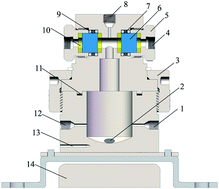Competition between lanthanides in extraction with tri-n-butyl phosphate in supercritical CO2 from solid nitrates
Abstract
Competition extraction of lanthanide nitrates with tri-n-butyl phosphate (TBP) in supercritical CO2 (SC-CO2) is investigated by monitoring the absorption spectra of Ln(III) in UV-Vis region. For light lanthanides Nd and Pr, the extracted Nd(III) and Pr(III) complexes with TBP in SC-CO2 increase proportionally with the concentration of TBP and the pressure, and the separation factor, βNd/Pr does not change obviously. In contrast, for the pair of one light and one heavy lanthanides, Nd and Ho, Nd(III) is preferentially extracted when TBP is inadequate for completely extracting both Nd(III) and Ho(III). In addition, the extraction of heavier Ho(III) is preferred over that of the lighter Nd(III) at higher pressures and temperatures, resulting in an increasing separation factor βHo/Nd. A noteworthy observation should be emphasized, that is the loading capacity of Ln(III) complexes in SC-CO2 is much bigger for mixed Ln(III) ions than for single one Ln(III). The different competition extraction behavior for the light–light Ln(III) pair and for the light–heavy Ln(III) pair, and the enhanced loading capacity of mixed Ln(III) complexes found here provide useful fundamental information for selective extraction of Ln(III) ions in SC-CO2.


 Please wait while we load your content...
Please wait while we load your content...